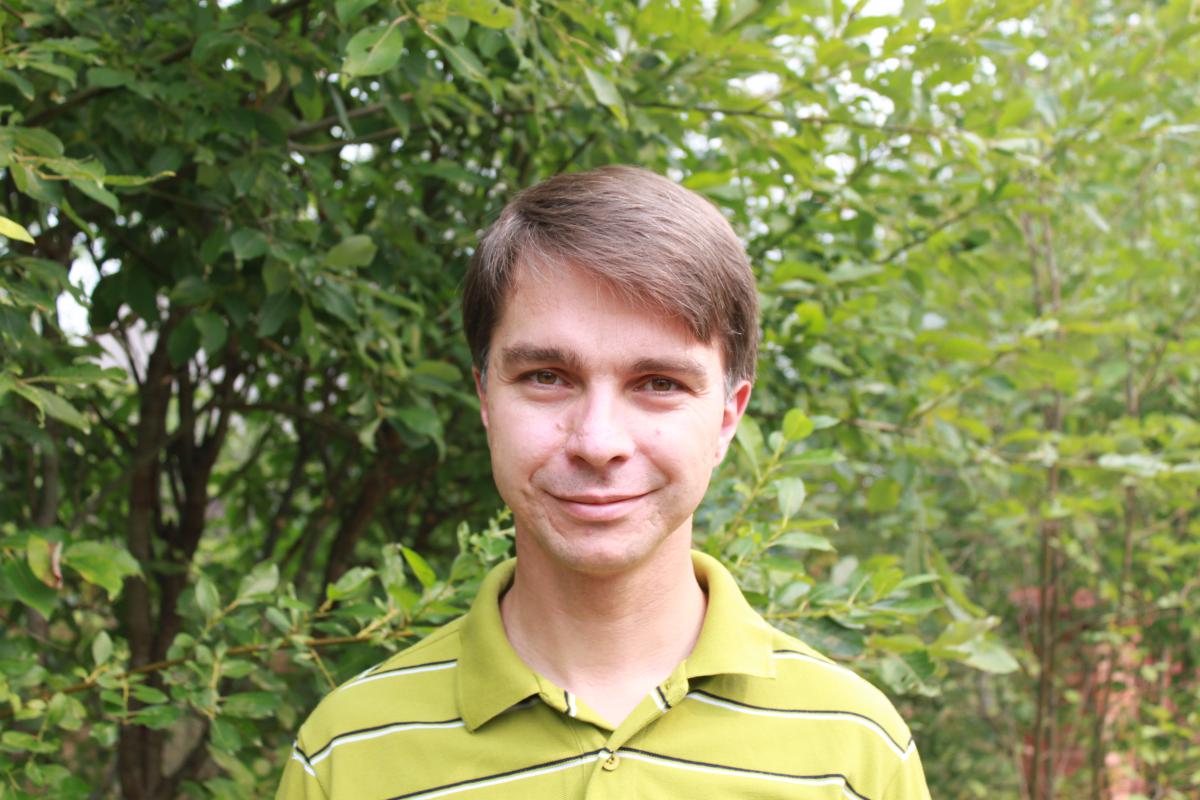Suppose you throw an equal number of white and black balls into a rectangular box which is, say, 30 balls long, 10 balls wide and is now 5 layers deep in balls. What it the probability that you have a run of touching white balls from one end of the box to the other?

Stanislav Smirnov
This question, asked all the way back in 1894 in the first issue of the American Mathematical Monthly, turned out be far from simple. In fact it appears to be the earliest reference to the rich mathematical field of percolation theory, according to Harry Keston, who told the International Congress of Mathematicians about Stanislav Smirnov's work in this area that lead to Smirnov winning the 2010 Fields Medal.
Just as the name conjures up the image of water percolating through soil or porous rock, percolation theory models this mathematically as a liquid flowing through a lattice of pipes. The points where the pipes join (mathematically known as the vertices of the lattice) are either blocked, stopping the flow of liquid, or open, allowing the liquid to flow through. You can imagine that if each vertex has a high probability p of being open (and the lattice is very porous like sand) then we can be fairly certain that the liquid will flow through the lattice of pipes. And if the probability p that each vertex is open is low (and the lattice is impermeable like hard clay) then we can be fairly sure the liquid is going to get stuck and not make it the whole way through.
It turns out that there is a particular critical probability for the vertices being open, pc, that determines exactly when a liquid can percolate across the lattice. If the probability that the vertices are open is below this critical probability, p < pc, then the liquid will never percolate through the lattice. When the probability of the vertices being open passes this critical point, and p > pc, the system flips behaviour and the liquid can trickle all the way through. (You can read an excellent more technical introduction in Percolation: Slipping through the cracks.)
Physicists are interested in this area as it is one of the simplest models to have a phase transition, where the behaviour of the system flips at a certain critical point. Phase transitions are an important part of physics, for example understanding the change between different phases of matter. Water immediately starts to boil once it is above a certain critical temperature (just under 100 °C at sea level) but will not boil at lower temperatures. What is particularly interesting is what happens at these critical points. How likely is it for the liquid to percolate across the lattice, called the crossing probability, when the vertices are open with the exact probability p = pc?
But the systems physicists are interested aren't neatly space lattices in regular shapes. Instead physicists are interested in what happens at the smallest possible scale when the spacing in the mesh of the lattice becomes finer and finer, which they call taking the scaling limit. For a given mesh size it is possible to calculate the crossing probability, and physicists were convinced from physical evidence that the crossing probability existed for the scaling limit. That is, they thought that as the mesh got finer and finer the crossing probabilities would get closer and closer to a final value that would be the crossing probability for the scaling limit. And the physicist John Cardy was even able to give a formula for calculating this final value. However, no one was able to prove mathematically either that this value would exist, or that the formula was correct.
In 2001 physicists and mathematicians alike breathed a sigh of relief when Smirnov proved that the crossing probability existed for the scaling limit for a two-dimensional triangular lattice, and that it was equal to the value calculated by Cardy's formula. Keston, himself a pioneer in the percolation theory, said that Smirnov's work would make statistical physicists very happy as it confirmed their assumptions and put the area on a solid mathematical foundation. And it is hoped that the novel techniques Smirnov used to prove this and related results will allow him and others to extend these results to any two-dimensional lattice (square, hexagonal, and so on), proving that Cardy's conjecture is universal and independent of the lattice being used.
At the end of Shmirnov's own presentation of his work at the ICM, he was asked if his work could be extended to three-dimensional lattices. Smirnov held up his hands, very little is known about how these models work in three-dimensions. Perhaps Smirnov, or a future Fields medallist, will take us there.